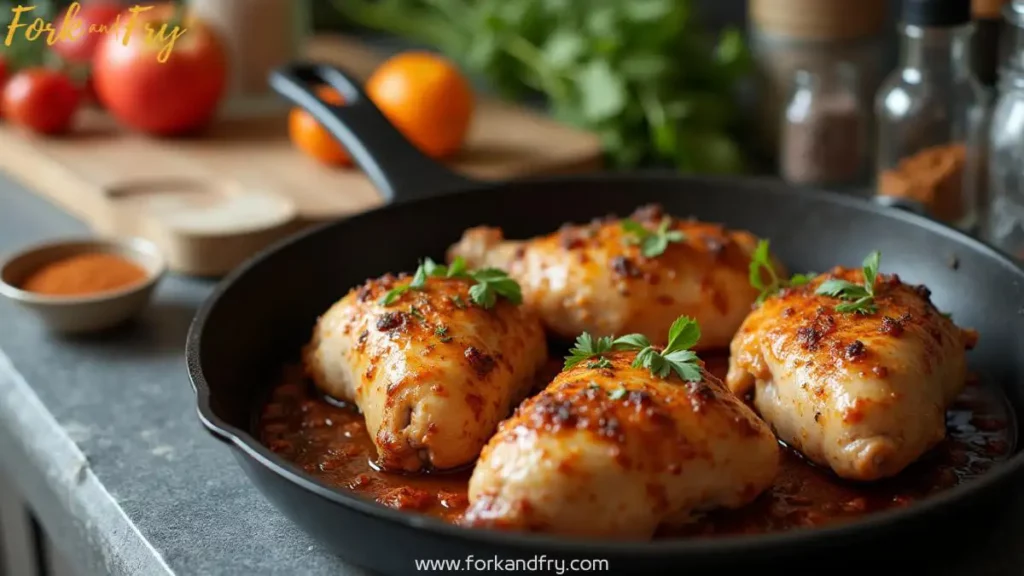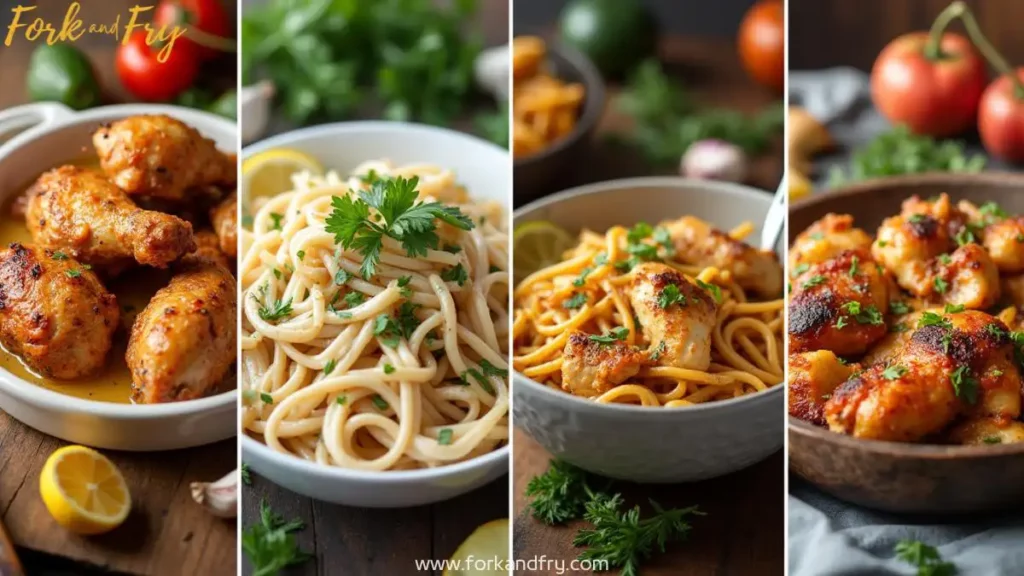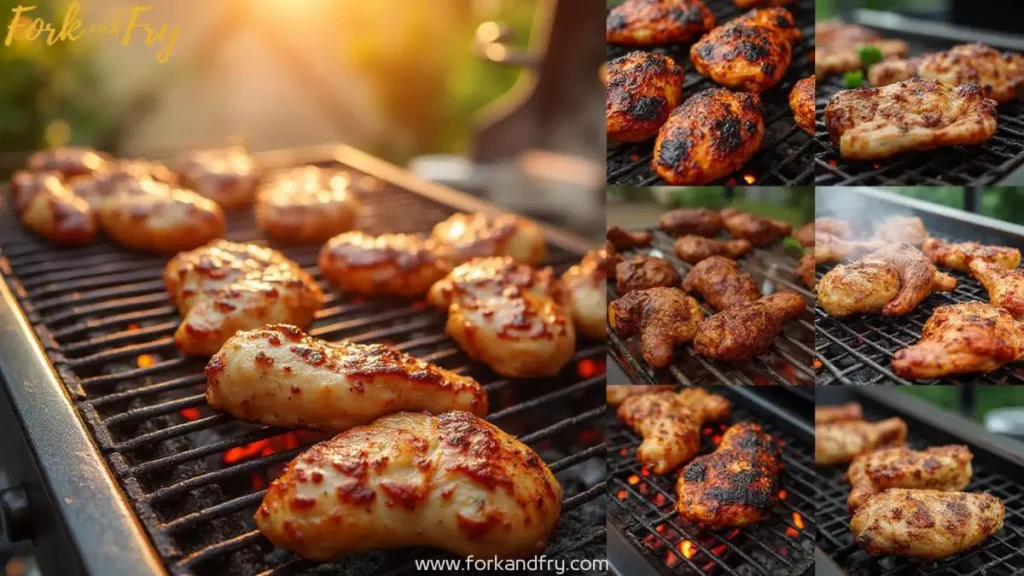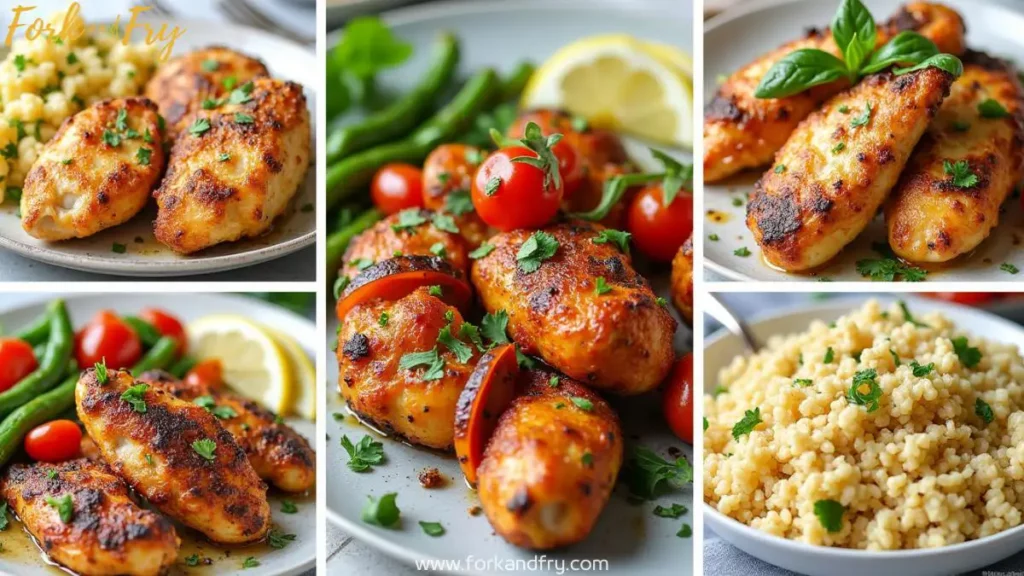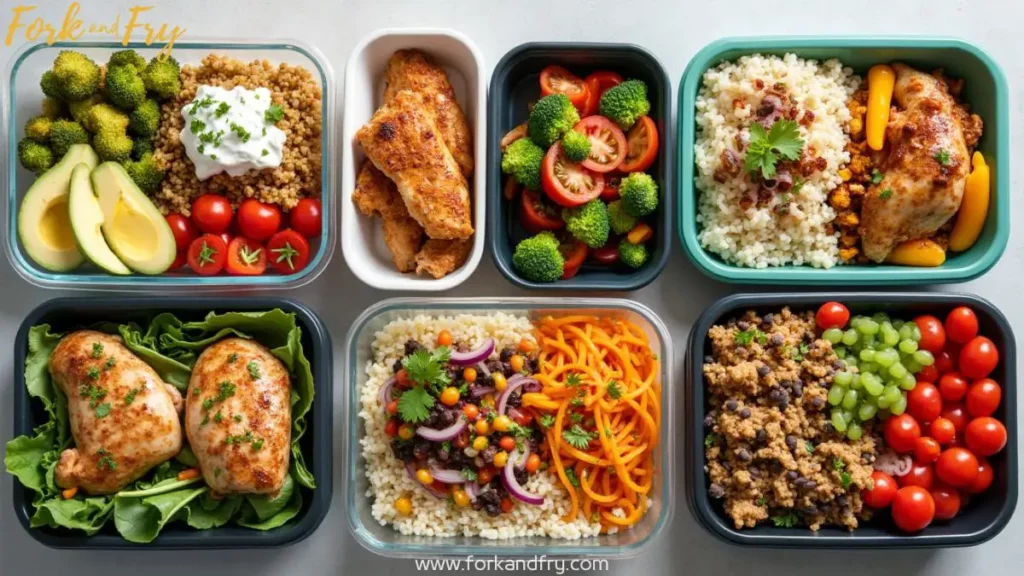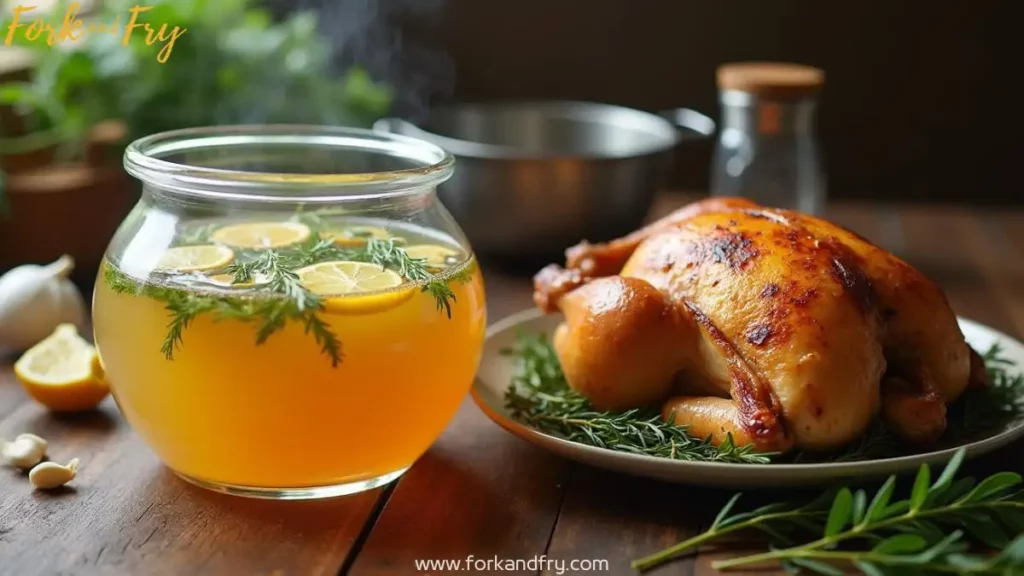Last updated on February 21st, 2025 at 09:20 am
Table of Contents
Imagine biting into a tender, juicy chicken breast that’s bursting with flavor. It’s a dream come true! To make this happen, you need to know the secrets of cooking juicy chicken. With the right techniques and a bit of practice, you can become a pro at cooking tender, flavorful poultry that will wow your family and friends.
Video for More Details
Cooking juicy chicken is all about paying attention to detail. From pounding the chicken to using a meat thermometer, every step is important. You want to cook your chicken to 165°F to ensure it’s safe and stays moist. Whether you’re baking, grilling, or pan-searing, the secret to juicy chicken is not to overcook it.
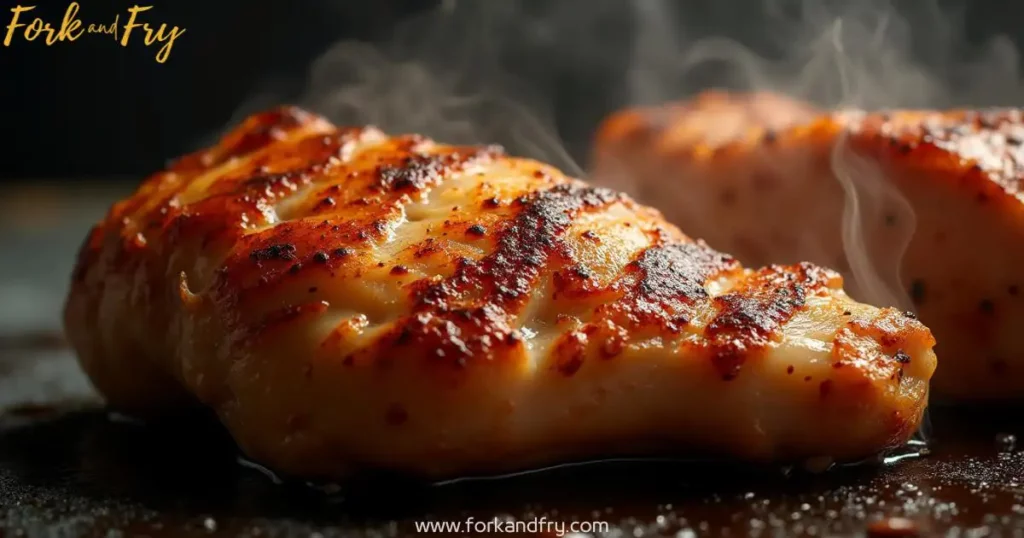
Introduction to Juicy Chicken
Cooking juicy chicken is an art that needs patience, practice, and the right techniques. This guide will teach you the secrets of cooking tender, flavorful chicken breasts. We’ll cover brining, marinating, cooking methods, and resting times to help you make perfect juicy chicken every time.
Key Takeaways
- Cooking chicken to the right temperature – 165°F – is key for safety and moisture.
- Using a meat thermometer helps avoid overcooking and ensures juicy chicken.
- Brining and marinating can make your chicken more tender and flavorful.
- Resting time is vital to keep juices in and make your chicken tender and flavorful.
- Cooking methods like baking, grilling, and pan-searing need specific techniques for juicy chicken.
- Understanding the science behind cooking juicy chicken will make you a better cook and help you get consistent results.
The Science Behind Juicy Chicken
When cooking chicken, you aim for tenderness and juiciness. The secret lies in muscle fibers and moisture. Temperature is also key, as overcooking can make chicken dry.
Cooking chicken involves heat that changes proteins and fibers. This can cause moisture loss, making chicken dry. But, by controlling temperature and using brines or marinades, you can keep moisture in. For instance, a marinade with lemon juice or vinegar in grilled chicken thighs helps retain moisture.
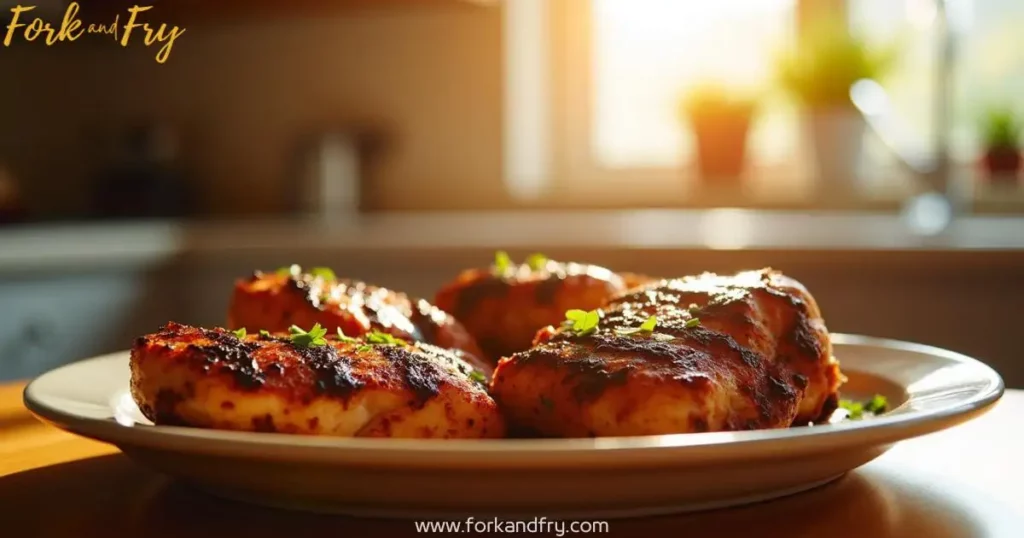
Here are tips for juicy chicken: * Use a meat thermometer to check the chicken’s internal temperature reaches 165°F (75°C) * Avoid overcooking to prevent moisture loss * Use marinades or brines to keep moisture in * Let the chicken rest before serving to let juices redistribute
By following these tips and understanding the science, you can make delicious, tender chicken. Your family and friends will love it.
Essential Tools for Perfect Poultry
Having the right tools is key to cooking delicious chicken. A meat thermometer is essential to ensure your chicken is cooked just right. For oven-roasted chicken, a cast-iron pan is perfect. It cooks evenly and gives a crispy crust.
Other must-haves include good tongs, stainless steel skewers, and a multi-rack for grilling. These tools help you cook perfect chicken every time. Whether you’re roasting or grilling, you’ll impress everyone with your skills.
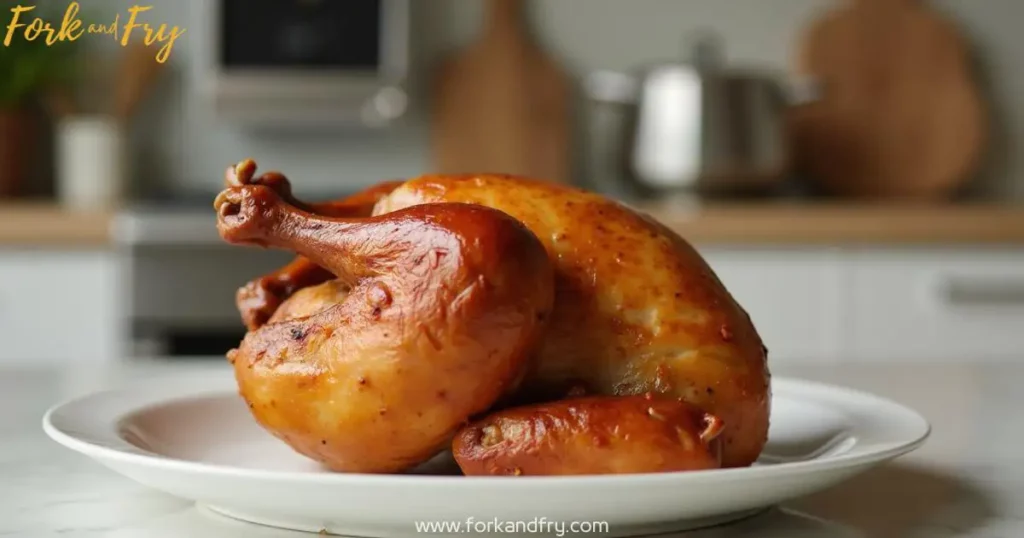
Tools like a rotisserie kit and a broiler pan are also handy. They help you get a golden outside and a juicy inside. With the right tools and a bit of practice, you can make amazing chicken dishes easily.
Preparation Techniques for Maximum Moisture
To make the best juicy chicken dishes, you need to prepare your chicken right. Try brining, marinating, or dry rubbing to add tenderness and flavor. These methods will make your chicken both tender and flavorful.
Choosing the right method is key when preparing chicken. Whether you like a classic brine or a spicy marinade, there’s something for everyone. These techniques ensure your chicken stays juicy and tender, even after cooking.
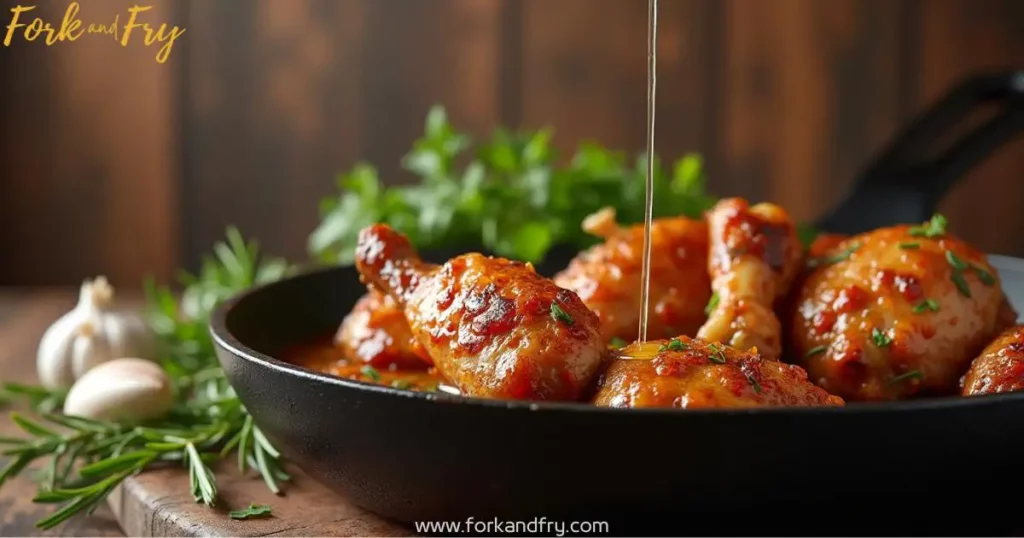
- Brining: soaking the chicken in a saltwater solution to add moisture and flavor
- Marinating: coating the chicken in a mixture of herbs and spices to add flavor and tenderize the meat
- Dry rubbing: applying a mixture of spices and herbs directly to the chicken to add flavor and texture
Using these techniques, you can make delicious and flavorful poultry for any event. Whether it’s for a big gathering or just a meal for one, these methods will help you create the best juicy chicken dishes.
Temperature Control: Your Secret Weapon
Temperature control is key when cooking juicy chicken. It doesn’t matter if you’re grilling, roasting, or sautéing. Making sure your chicken reaches the right temperature is vital for great results. For grilled chicken thighs, keeping an eye on the temperature is critical to avoid overcooking.
Cooking oven-roasted chicken to the correct temperature is a game-changer. A meat thermometer helps you ensure the chicken is safe to eat and stays juicy and flavorful.
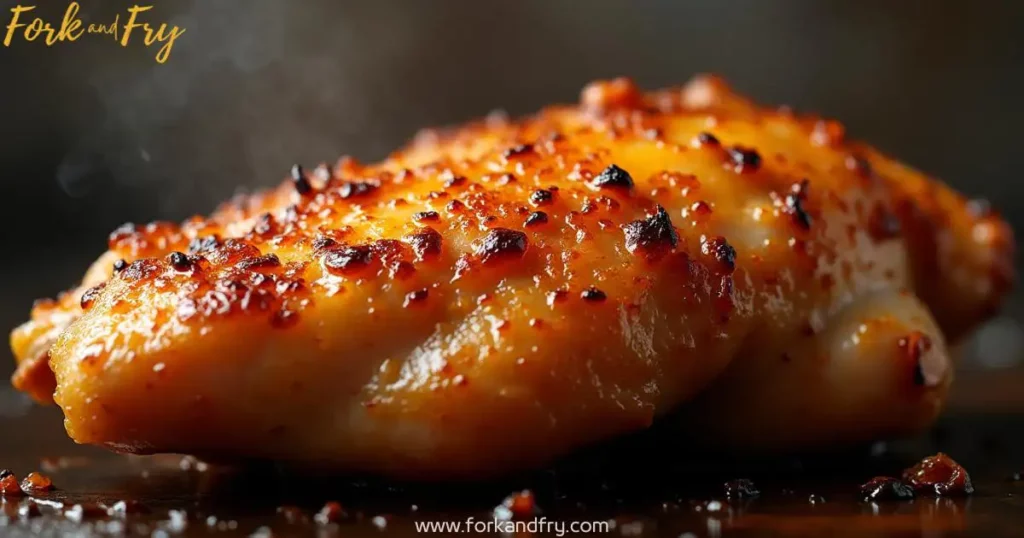
Stick to these temperature guidelines for perfectly cooked,juicy chicken every time.
Mastering Stovetop Chicken Techniques
Cooking chicken on the stovetop opens up a world of flavors. Techniques like pan-searing, poaching, and sautéing can make chicken tender and juicy. Using marinated chicken can boost flavor by up to 40%. A perfectly cooked chicken breast is a true treat.
Here are some tips for stovetop chicken cooking:
- Use a hot skillet to sear marinated chicken, achieving a golden crust on the outside while locking in moisture.
- Don’t overcook – chicken cooked to an internal temperature of 165°F is essential to prevent dryness.
- Experiment with different marinades and seasonings to find your favorite flavors for mouthwatering chicken recipes.
By following these guidelines and practicing your stovetop skills, you’ll be well on your way to creating delicious, succulent chicken dishes that are sure to please. Whether you’re cooking for one or a crowd, the art of stovetop chicken cooking is sure to become a favorite technique in your kitchen.
Oven-Roasted Chicken Mastery
To make the best juicy chicken dishes, mastering oven-roasted chicken is key. This classic dish is simple to make and loved by all. With a few tips, you can make your chicken tender, juicy, and full of flavor.
Not overcooking the chicken is vital for flavor. Use a meat thermometer to check if it’s at 165 degrees Fahrenheit. Letting the chicken rest for 10-15 minutes before carving helps keep it tender.
Here are some tips for oven-roasted chicken mastery: * Choose a whole chicken that’s 2-4 pounds. * Roast it in a preheated oven at 400 degrees Fahrenheit. * Baste the chicken with melted butter every 30 minutes. * Stuff the cavity with fresh herbs like thyme for extra flavor. * Let the chicken rest for 10-15 minutes before carving.
By following these tips and practicing, you’ll make delicious, tender, and juicy chicken dishes. Always use a meat thermometer and avoid overcooking. Soon, you’ll be making the best juicy chicken dishes for your family and friends.
Grilling the Perfect Juicy Chicken
Grilling chicken is a fantastic way to cook it. With a few simple tips, you can get amazing results. It’s key to know the difference between direct and indirect heat.
Direct heat is perfect for grilled chicken thighs. It gives a nice sear on the outside and keeps the inside juicy. On the other hand, indirect heat is better for succulent chicken breast. It helps prevent drying out.
Keeping an eye on the grill temperature is also important. It should be in the optimal range. This prevents overcooking and ensures even cooking. Also, letting the chicken rest for a few minutes before slicing helps keep it juicy.
Other tips for grilling juicy chicken include using a marinade or brine. This adds flavor and moisture. And, make sure to cook the chicken to the right internal temperature. By following these tips, you can make grilled chicken thighs and succulent chicken breast that will impress everyone.
Common Mistakes to Avoid
When cooking tender chicken, it’s easy to make mistakes. These can result in dry, flavorless dishes. To help you make the best juicy chicken, let’s look at common errors to avoid. Whether you’re experienced or new, knowing these mistakes can greatly improve your cooking.
Temperature control is key when cooking chicken. It’s important to ensure your chicken reaches a safe internal temperature of 165°F. But, overcooking can make the meat dry and tough. Using a thermometer helps you cook chicken perfectly every time.
Avoiding Temperature Mishaps
To avoid temperature mistakes, understand carryover cooking. This means removing the chicken from heat when it’s 10 to 20 degrees below the target. This allows the meat to finish cooking with the remaining heat. It helps you get tender, juicy chicken full of flavor.
Cutting and Serving Errors
Cutting and serving mistakes can also affect your dish. Letting the chicken rest for 10 minutes before slicing helps keep juices in. Also, cutting against the grain makes the chicken more tender and easier to chew.
Storage Problems
Storage issues can also impact your chicken’s quality. Cool the chicken to room temperature within two hours of cooking. Then, refrigerate or freeze it quickly to prevent bacterial growth and keep it fresh longer.
By avoiding these common mistakes, you can make delicious, tender chicken dishes. Remember, practice makes perfect. Don’t get discouraged if it takes a few tries to get it right. With time and patience, you’ll be cooking like a pro, making the best juicy chicken dishes.
Advanced Tips for Restaurant-Quality Results
To get restaurant-quality chicken, focus on a few key things. First, cook your chicken to 165°F (74°C). This makes it juicy and safe to eat. A meat thermometer helps you hit this perfect temperature.
Don’t overcook your chicken. Overcooking makes it dry and tough. Cook it just right and let it rest for 5-10 minutes. This makes it tender and juicy.
Marinating your chicken is also important. A good marinade adds flavor and tenderness. Try olive oil, lemon juice, and herbs for a few hours or overnight. You can also use yogurt and spices for a unique taste.
Other tips include using a sous vide machine for even cooking. Cooking in a skillet with a bit of oil can also help. A marinade or brine can make your chicken even more flavorful and moist.
- Use a meat thermometer to ensure your chicken is cooked to the right temperature.
- Don’t overcook your chicken – cook it for the right amount of time and let it rest.
- Marinate your chicken to add flavor and tenderness.
- Try using a sous vide machine for even cooking and to prevent overcooking.
- Experiment with different cooking methods, such as grilling or pan-frying, to create a crispy exterior and a tender interior.
By following these tips, you can make delicious chicken that will impress everyone. Whether it’s marinated, juicy, or mouthwatering, focus on the right techniques and ingredients. With practice and patience, you can make restaurant-quality chicken at home.
Special Techniques for Different Chicken Cuts
Chicken breasts, thighs, and wings are popular, but there’s more to explore. Succulent chicken breast can be made moist and flavorful in many ways. You can brine or dry rub it for the best taste.
Grilled chicken thighs are tasty and easy to cook. Their dark meat stays juicy, even when grilled hot. Oven-roasted chicken is perfect for a special meal. It combines white and dark meat beautifully.
Want a quick dinner or a fancy meal? Learning to cook different chicken cuts is key. Try marinades, rubs, and cooking styles to find your favorites. Soon, your chicken will taste like it’s from a restaurant.
FAQ
What is the science behind cooking juicy chicken?
Cooking juicy chicken involves understanding muscle fibers and moisture. These factors greatly affect the chicken’s tenderness and juiciness. Temperature also plays a key role in keeping the chicken moist. Overcooking can make the chicken dry and tough.
What essential tools are needed for cooking perfect poultry?
To cook perfect poultry, you need a meat thermometer. It ensures the chicken is cooked to the right temperature. A cast-iron pan is also essential. It provides even heat and helps create a crispy crust.
What are the key preparation techniques for maximizing moisture in chicken?
To maximize moisture in chicken, try brining, marinating, and dry rubbing. These methods add moisture and flavor. This way, the chicken stays tender and juicy even after cooking.
How important is temperature control when cooking juicy chicken?
Temperature control is very important for juicy chicken. Using a meat thermometer helps cook the chicken to the right temperature. This ensures it stays juicy and flavorful, whether grilled, roasted, or sautéed.
What are the secrets to mastering stovetop chicken techniques?
Mastering stovetop chicken techniques involves pan-searing for a golden crust. You also need to know proper poaching and sautéing methods. These skills help achieve tender, flavorful, and juicy chicken.
What are the keys to achieving perfect oven-roasted chicken?
For perfect oven-roasted chicken, learn the art of oven-roasting. This technique ensures tender, juicy, and flavorful results. Your family and friends will be impressed.
What tips are important to consider when grilling juicy chicken?
Grilling juicy chicken requires understanding direct and indirect heat. It’s also important to monitor grill temperature. Following proper resting and serving tips ensures the chicken is juicy, flavorful, and tender.
What are some common mistakes to avoid when cooking chicken?
Avoid temperature mishaps, cutting and serving errors, and storage problems when cooking chicken. Knowing these common mistakes helps ensure your chicken is cooked perfectly every time.
What advanced tips can help achieve restaurant-quality chicken results?
For restaurant-quality chicken, use a meat thermometer and avoid overcooking. Making small tweaks to your technique can also help. These tips can make your chicken dishes as good as your favorite restaurants.
How do cooking techniques differ for various chicken cuts?
Different chicken cuts need different techniques for perfect results. Learning how to prepare breasts, thighs, drumsticks, and wings is key. This knowledge helps create delicious dishes that highlight each cut’s unique qualities.
